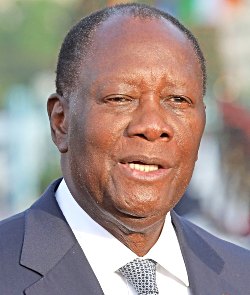 The Republic of Cote D'Ivoire or "Ivory Coast", is a beautiful country in the western part of Africa bordering the Republic of Ghana to the east, the Republics of Burkina Faso and Mali to the north, and the Atlantic Ocean (The Gulf of Guinea) to the south. Cote D'Ivoire has a total land area of about 322,463 squared kilometers with about 515 kilometers of coastline.
The Republic of Cote D'Ivoire or "Ivory Coast", is a beautiful country in the western part of Africa bordering the Republic of Ghana to the east, the Republics of Burkina Faso and Mali to the north, and the Atlantic Ocean (The Gulf of Guinea) to the south. Cote D'Ivoire has a total land area of about 322,463 squared kilometers with about 515 kilometers of coastline.
The Republic of Cote D'Ivoire has an estimated population of about 28 million people with the population growth rate around 2.08%. About 51% of the total population of Ivory Coast lives in urban areas with the annual rate of urbanization around 3.7%.
The metropolitan area of Abidjan, the largest city and former capital of Ivory Coast (and the current seat of government), is home to about 7 million people. Yamoussoukro, the capital of Ivory Coast, contains about 500,000 people. Greater part of Ivory Coast's total population lives along the sandy coastal regions. With the exception of the capital area, the forested interior regions of Ivory Coast are sparsely populated.
Like its neighboring country Ghana, Ivory Coast or the Republic of Cote D'Ivoire, is blessed with abundance of natural resources such as gold, diamond, manganese, hydropower, copper, nickel, tantalum, silica sand, clay, iron ore, petroleum, natural gas, etc. Also, Ivory Coast is the world's leading producer of cocoa beans (followed by Ghana its neighboring country).
However, despite the abundance of natural and human resources, Ivory Coast remains one of the poorest countries in the world today with about 40% of its total population living below the international poverty line of $1.90 a day.
The Republic of Cote D'Ivoire has a literacy rate of about 48.7% with the female literacy rate hovering around 38.6%. In other words, just about 38.6% of Ivory Coast's total female population above the age 15, can read and write. The poor educational structure, especially poor girl-child education, also explains the high teenage pregnancy and HIV/AIDS adult prevalence rates in Ivory Coast today. Most school dropouts, especially girls, become pregnant and end up hawking on the streets, and most of the boys who drop out of school end up working like slaves in cocoa farms across the country.
According to the World Health Organization and UNAIDS, about 430,000 people are living with HIV/AIDS in Ivory Coast today with about 40,000 deaths recorded annually. Ivory Coast remains one of the malaria killing zones in Africa today, and the deadly malaria continues to kill people in record numbers. Apart from HIV/AIDS and malaria, Typhoid fever, bacterial and protozoal diarrhea and several other diseases and illnesses continue to threaten several lives in Ivory Coast today.
Ivory Coast's forests, which used to be the largest in West Africa, are almost all gone due to rampant deforestation and overpopulation. Most of the water bodies in Ivory Coast today are polluted due to improper sewage disposals, industrial and agricultural runoffs, etc.
Corruption levels remain at all-time high in Ivory Coast today. Incompetent leadership, mismanagement of funds, ethnocentrism, etc. continue to tear Ivory Coast apart. Also, the numerous political and religious conflicts, especially between Muslims in the north and Christians in the South, sometimes drive investors away.
